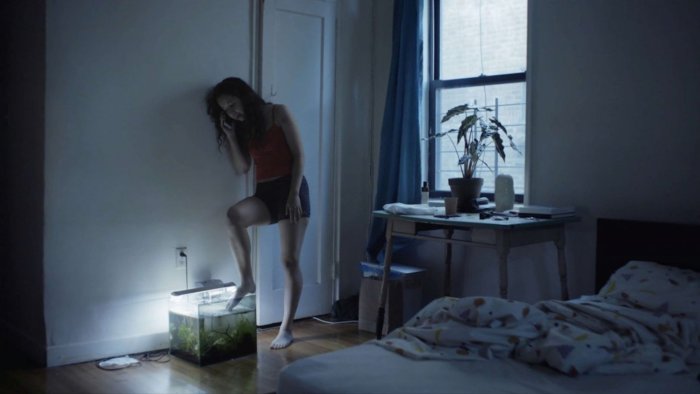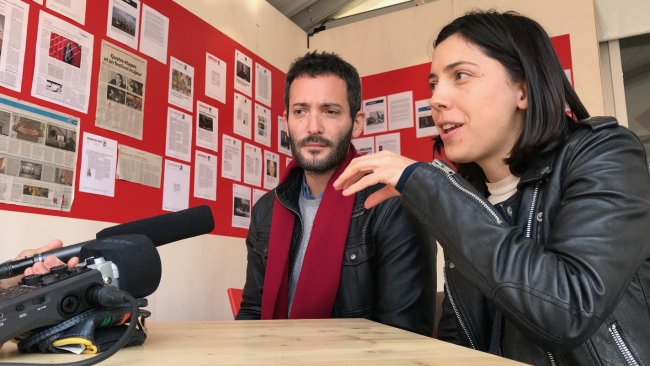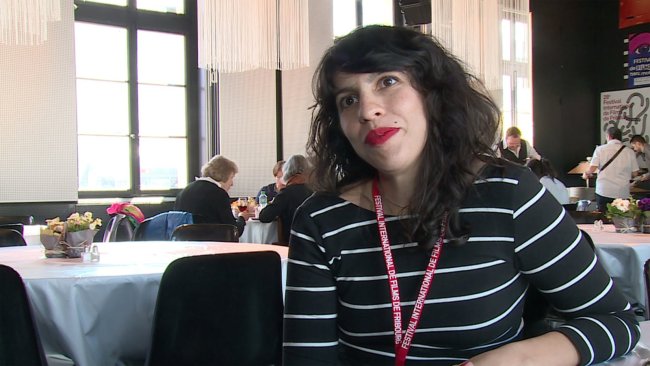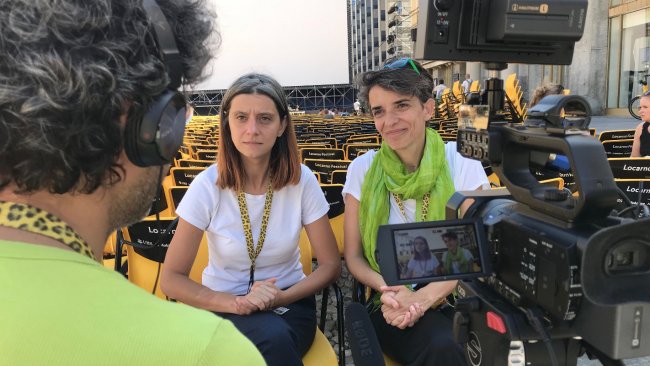Actual People
[…] Zauhar, who is of Asian descent, notes that the mumblecore canon has been, at least so far, glaringly white, and that in any case this film should stand on its own as a testament to joyful, free-flowing film-making.
[…] Rather than the vital idiolect of one particular generation exploding on the screen with all its quirks and spontaneous energy, «Actual People» gives us instead a view from the outside, a peak into a glasshouse from which the characters struggle to escape.
Text: PM Cicchetti

Podcast
Café Critique
Discussion about «Actual People» by Kit Zauhar with Ruth Baettig, Dominic Schmid, Giuseppe Di Salvatore | Concept & Editing: Jeannette Wolf
Find a list of all our Podcasts here.
Actual People is the type of film that seems designed to elicit an aggravated response from the most patient spectator. It is, for one thing, gloriously self-indulgent. The subject matter: Riley, a young woman coasting along in New York City during her final week of University, idly contemplating her future prospects while hanging out with friends, repeatedly getting drunk, attempting to bounce back from a messy breakup, flunking her final philosophy essay, getting thrown out of her flat, assaulting her former partner on the street, and then returning home.
The film was shot on a micro-budget and performed mostly by friends and relatives of the director, Kit Zauhar, who also plays the lead. Zauhar wanted to make her contribution to the mumblecore canon and, in that sense, the result improves on the intention. Actual People wears the facile naturalism of the movement on its sleeve, while also steering clear of the rough edges of its trademark lo-fi aesthetic. Samantha Morris’ sound mix spares us the muffled dialogues, and DOP Owen Smith-Clark does a superb job in retaining the impression of hand-held minimalism, all the while resorting to a gamut of artificial lights to give variety and depth to the visual texture of the film.
There is, in other words, a great deal of obvious talent at work here, so why the aggravation? The brutal answer is that, good execution notwithstanding, it is hard to see how any of this should matter to anyone but the director. A modicum of narcissism is part of every artist’s bag of tricks, but when combined with a style that turns navel-gazing into a raison-d'être, people might feel that scoffing is a fairly legitimate reaction. In response (or rather, as a pre-emptive justification), Zauhar, who is of Asian descent, notes that the mumblecore canon has been, at least so far, glaringly white, and that in any case this film should stand on its own as a testament to joyful, free-flowing film-making.
Both of these points are technically true; both, however, invite some scrutiny. To say that the scope of the mumblecore movement has been limited to a very limited subset of people, roughly middle-class white millennials, is beyond dispute. The argument that the naturalism of its trance-of-life approach implies a universality that’s simply not there is equally well founded. After all, not everyone aged 22-26 can afford to be an ingenue in New York City, but of course, that is exactly the point. Hidden at the core of all this is a self-effacing, yet unmistakable assumption of cultural prestige. It is the perceived desirability of that generational representation (that is to say, to desire to recognise oneself in it) that fuels the appeal of recent entries in the mumblecore canon and, in turn, the attempt to widen the aperture. Except, of course, what matters is not really representing how race informs different experiences – what counts is showing people having exactly the same experiences regardless of race.
The fact that Riley is mixed-race Asian American is essentially a McGuffin. The fact that she spends half of the film’s runtime pursuing the one other mixed-race Asian American boy she’s previously met at a party, and that such pursuit ends in one of the most inane exchanges of the entire film, further confirms this point. In other words, and somehow against the director’s own claim, the inclusion of race does not result in a more nuanced and authentic characterisation of young life in the city.
Is this a case of glamour trumping authenticity, then? Well, no, and that’s what is most surprising: there is little trace of desirability here. The film’s attitude towards young adulthood in New York seems at best disillusioned, at worst cynically jaded. That’s because Riley (and, it seems, everyone else around her) is (are), yes, looking for a true sense of self, but does so in a context where identities, including ethnic identities (and place, and class, and, for that matter, psychoanalysis and philosophy) fail to provide any meaningful anchorage. Language itself seems to fail. During one of the few set pieces of the film, Riley’s flatmate finds himself stuck mid-sentence when apologising for throwing her out: «I’m sorry it had to be like this, but.. I don’t know, I don’t know how to finish that sentence, I just started it because it sounds like something people say.»
Carmen Paddock complains here that characters in the film often mention being high or drunk, in what she sees as a way for the writer to excuse the «slapdash approach» to dialogue. My sense is that, with all its voicy mimetism, language in the film is a mostly performative affair, void of any actual communicative intent. «Performative» is the key word here. Rather than a joyful piece of liberated youthful cinema, what Actual People offers is a death rite, a funereal charade in which everyone simply goes through the motions. One could say there is a Kafka-esque element, if not for the fact that the motions, here, are not the strict conventions of European bourgeoisie, but casual sex and abundant party-going.
Unreality, failure of communication, alienation. It should not come as a surprise, at this point, that the film is coy about its time setting. Far from being a more authentic representation of lived life, these characters’ experiences remain stuck on a pre-mediated surface. At a party in Philly, one of Riley’s high school friends prattles adoringly about the protagonist’s lifestyle in New York: «is your life like a TV show now?». Rather than the vital idiolect of one particular generation exploding on the screen with all its quirks and spontaneous energy, Actual People gives us instead a view from the outside, a peak into a glasshouse from which the characters struggle to escape.
*
In cauda. Considering that mumblecore is roughly twenty-years old, one wonders whether Zauhar might be trying to turn the whole thing on its head, using naturalism to channel the detachment of a generation incapable of accessing their own lived experiences other than through a screen. In this light, the choice to enter a canon so closely associated with the early years of digital media (Funny Ha Ha screened at SXSW in 2005) suddenly takes on quite a different undertone. In Actual People smartphones are nowhere to be seen. What we have instead are frequent moments in which the frame goes to black, and constellations of small “screens” pop up, showing selfies and social-media-like videos from the characters’ adolescence. Growing up in a world where the self is an image, and faced with the prospect of becoming actual people, it is a mite tragic, if not entirely unexpected, that these young adults should seek escape in past images.
This article contains a third-party video. If you would like to watch the video, please adjust your settings.
Info
Actual People | Film | Kit Zauhar | USA 2021 | 84’ | Locarno Film Festival 2021
First published: August 28, 2021



